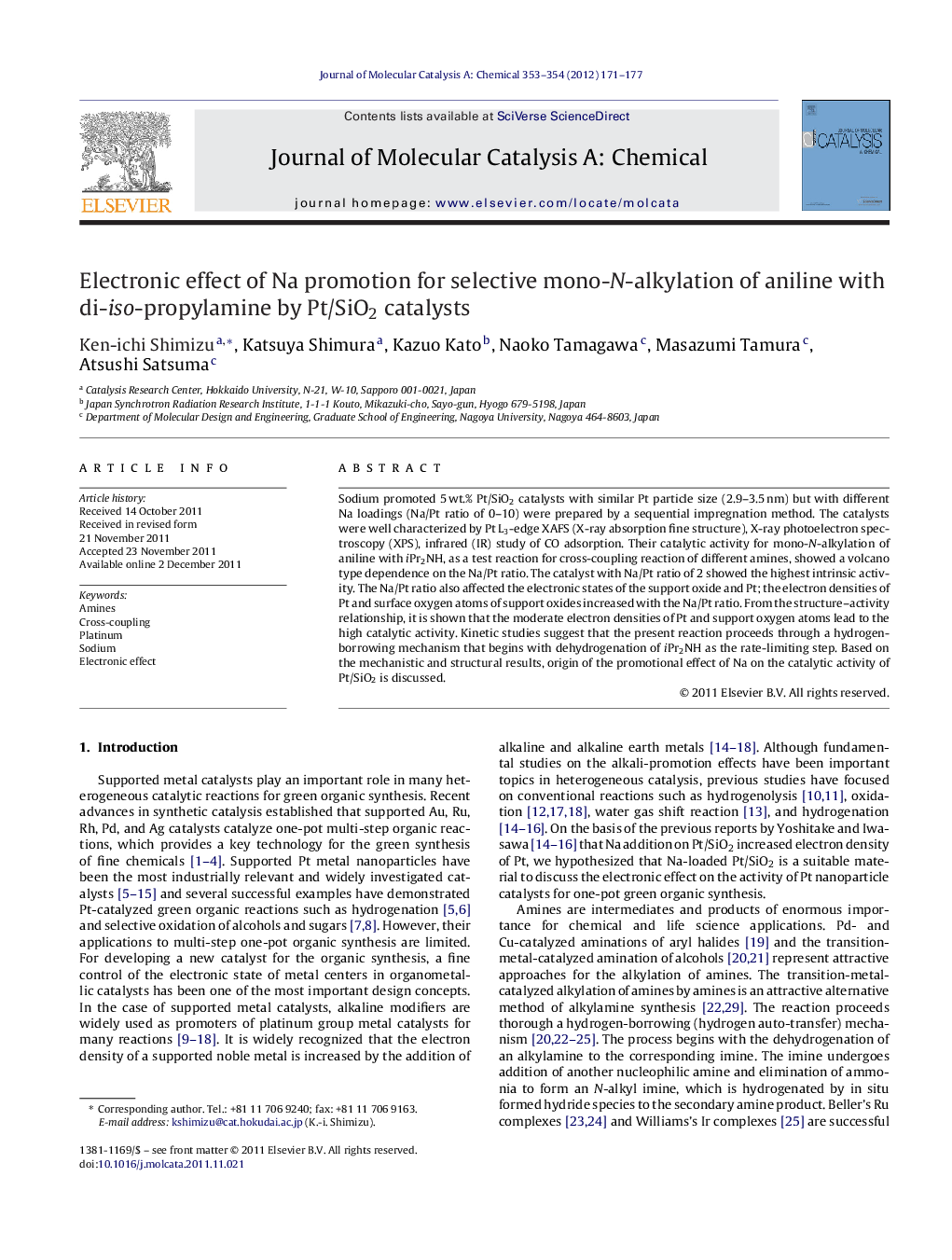| Article ID | Journal | Published Year | Pages | File Type |
|---|---|---|---|---|
| 66234 | Journal of Molecular Catalysis A: Chemical | 2012 | 7 Pages |
Sodium promoted 5 wt.% Pt/SiO2 catalysts with similar Pt particle size (2.9–3.5 nm) but with different Na loadings (Na/Pt ratio of 0–10) were prepared by a sequential impregnation method. The catalysts were well characterized by Pt L3-edge XAFS (X-ray absorption fine structure), X-ray photoelectron spectroscopy (XPS), infrared (IR) study of CO adsorption. Their catalytic activity for mono-N-alkylation of aniline with iPr2NH, as a test reaction for cross-coupling reaction of different amines, showed a volcano type dependence on the Na/Pt ratio. The catalyst with Na/Pt ratio of 2 showed the highest intrinsic activity. The Na/Pt ratio also affected the electronic states of the support oxide and Pt; the electron densities of Pt and surface oxygen atoms of support oxides increased with the Na/Pt ratio. From the structure–activity relationship, it is shown that the moderate electron densities of Pt and support oxygen atoms lead to the high catalytic activity. Kinetic studies suggest that the present reaction proceeds through a hydrogen-borrowing mechanism that begins with dehydrogenation of iPr2NH as the rate-limiting step. Based on the mechanistic and structural results, origin of the promotional effect of Na on the catalytic activity of Pt/SiO2 is discussed.
Graphical abstractFigure optionsDownload full-size imageDownload high-quality image (116 K)Download as PowerPoint slideHighlights► Moderate amount of Na-loading enhances the TOF of Pt/SiO2 by a factor of 2.4. ► Na-loading increases the electron density of support oxygen atoms and consequently increases the electron density of Pt metal. ► Developed catalyst shows higher TOF than the homogeneous catalyst in the literature for the amine cross-coupling.
